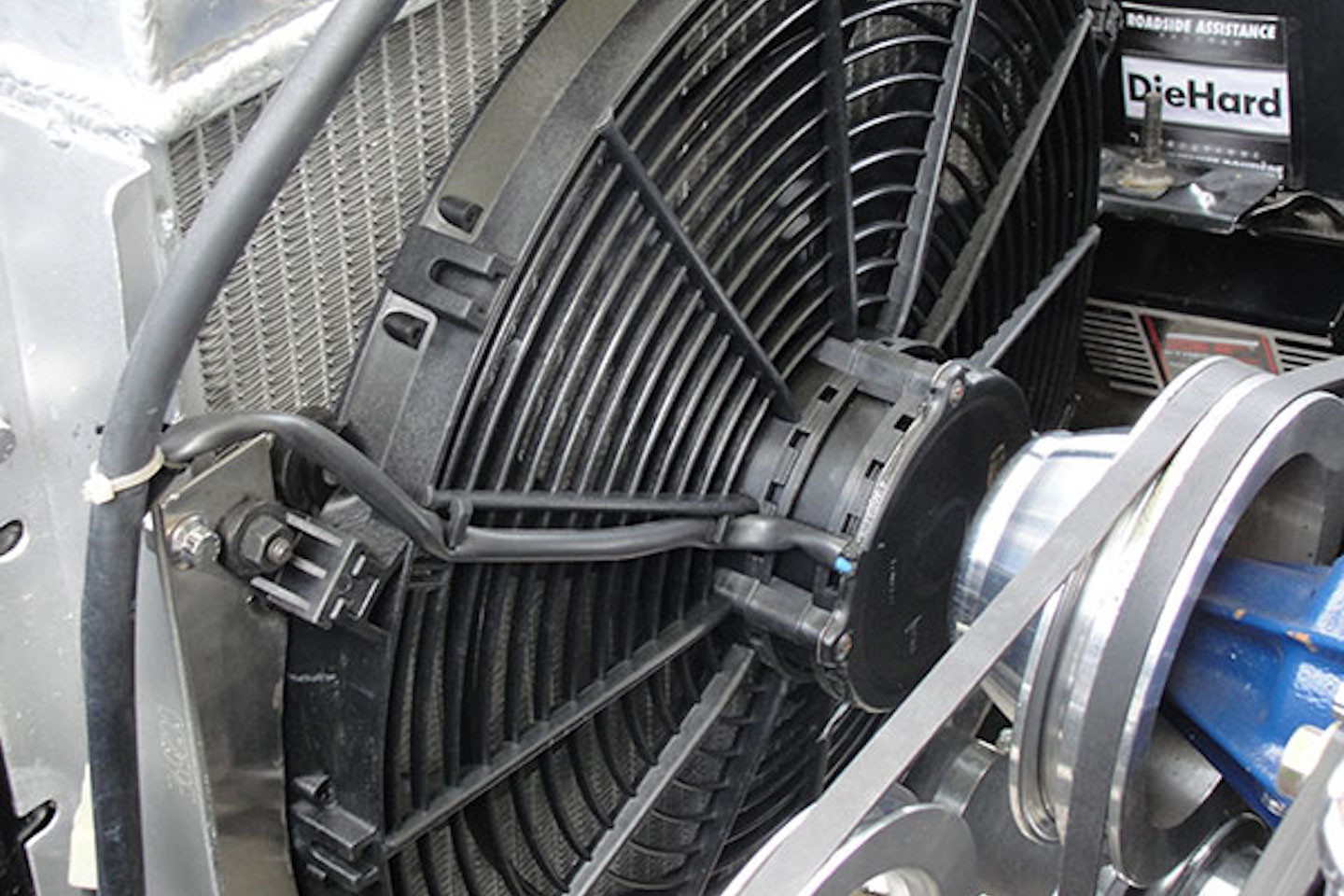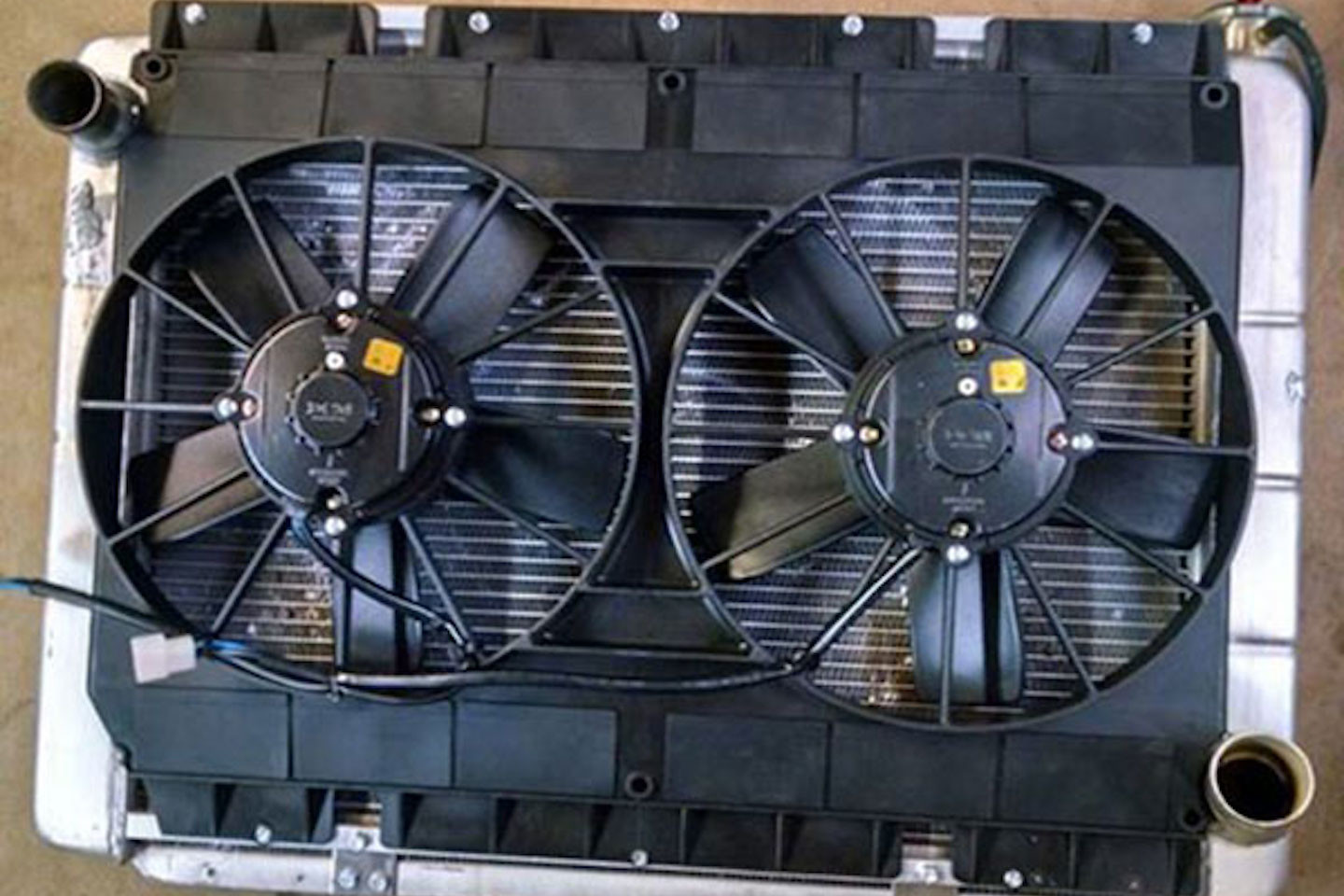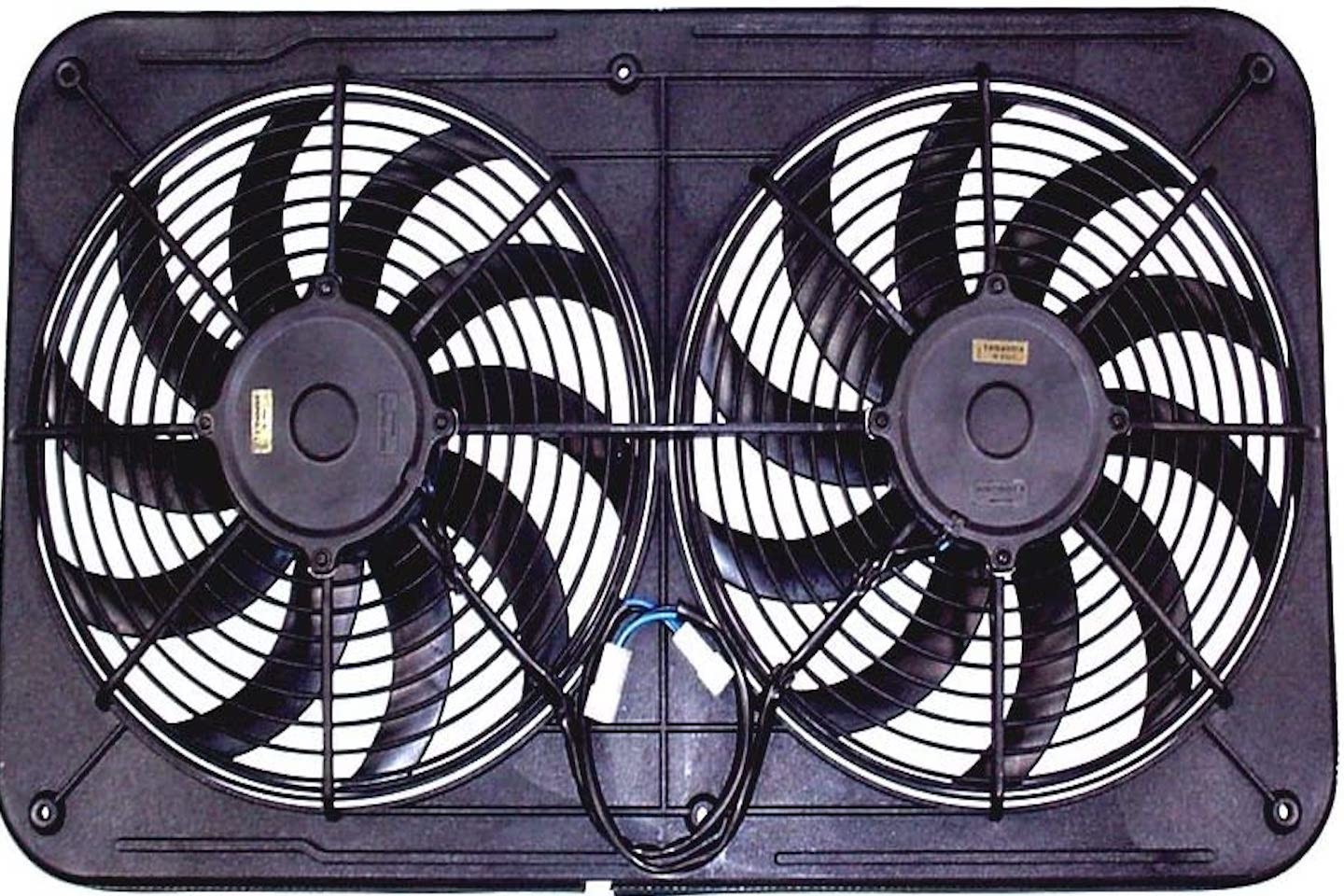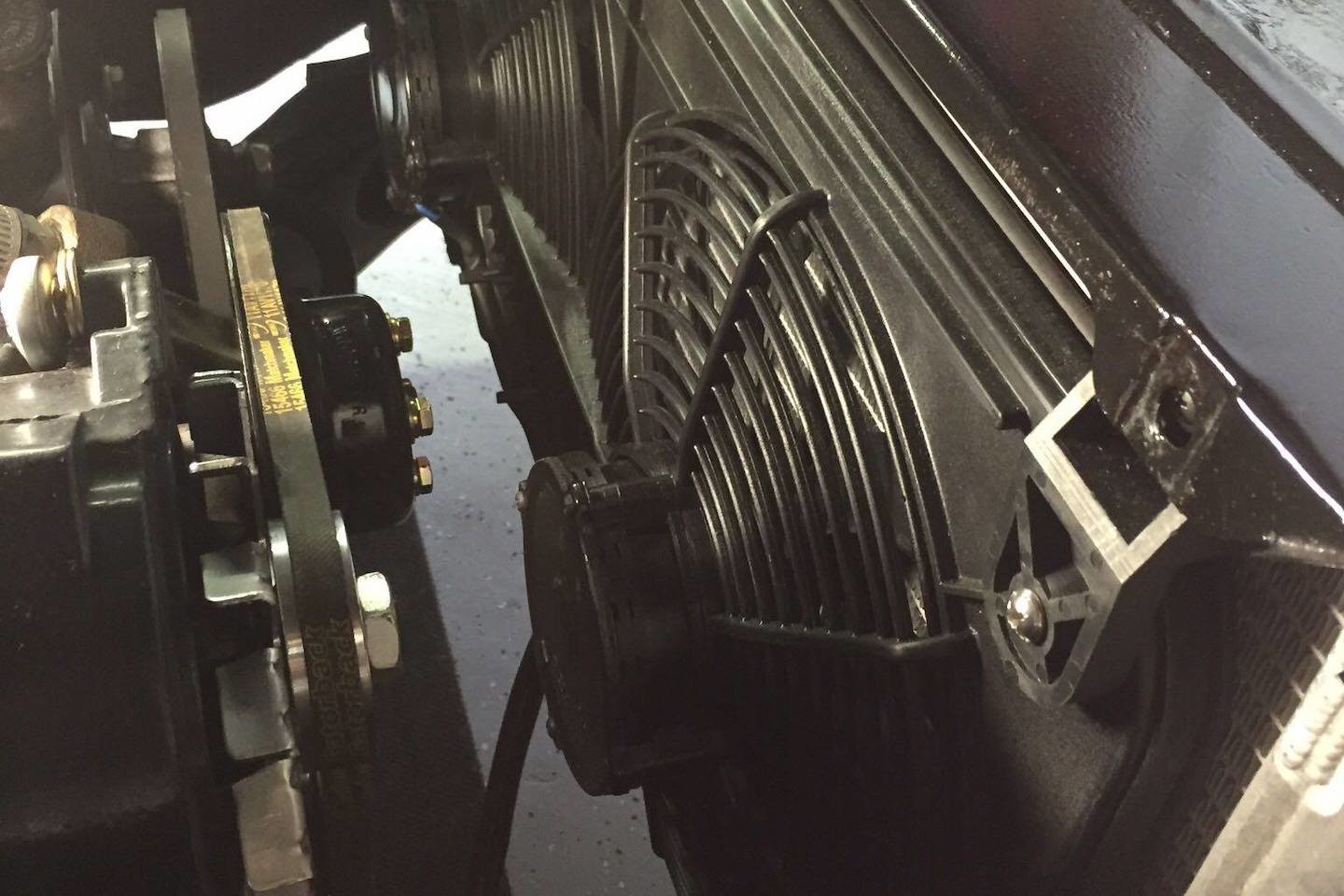Sometimes it can be confusing when switching from an engine-driven cooling fan to an electrical cooling fan. There are a lot of options on the market. Maradyne High-Performance Fans alone offer five different series of fans. From the Champion Series, Mach Series, Jetstreme Series, Challenger Series, to the Pacesetter Series fans – each with a specific purpose and application in mind.

Photos from Maradyne Facebook Fanpage.
Maradyne’s Champion series electric fans are great for use in many unique applications like remote transmission coolers, oil coolers, or intercoolers. Like the other Maradyne fans, the fans in this series have a reversible motor, so they can be used as a puller or pusher type. This is a major advantage in systems where you have space constraints. Utilizing sealed motors, these fans are perfect for harsh conditions, including off-road, and they can be sprayed clean without moisture entering the motor. The electric fans have a glass-filled nylon shroud and blade and are high-temperature and impact-resistance for harsh underhood temperatures and greater resistance to flying debris.
The Mach Series are separated into Mach One and Mach Two, and Mach Two Extreme types. The Mach One is a shrouded 16-inch skewed blade puller electric fan with a powerful 225 W motor. The Mach Two series features the same electric motors as the Mach One but coupled with dual 11-inch straight blade puller fans in a shroud to put out even more airflow. The Mach Two Extreme takes it to the next level with dual 16-inch puller “S” blade fans. These Mach series shrouded fans are available with different mounting bracket positions, so you can match up with your radiator mounting style.
The Jetstreme series electric fans feature a low-profile design to allow for turbo or supercharger installations. The Jetstreme One series is a shrouded 12-inch puller-type featuring an “S” blade fan. The Jetstreme Two series is a dual 12-inch puller with “S” blade fans in a larger shroud. Both series use sealed motors and are dust and waterproof to IP68. The S-blade design is utilized for quieter operation and both series have a rubber seal on the shroud that eliminates vibration contact and helps seal for increased airflow. The Maradyne Jetstreme electric fans have all glass-filled nylon construction for maximum durability.
Maradyne’s Challenger series medium profile fans options include 10-inch and 16-inch reversible “S” blade electric fans that focus on quiet performance. The reversible design motor can be used as a puller or pusher style fan. The straight blade Challenger fan is a 16-inch straight blade puller fan that focuses on moving air. Like the other Maradyne series, these fans have glass-filled nylon shrouds and blades that work well in high-temperature environments for lower underhood temperatures. They are impact-resistant to guard against flying road debris and feature four 90 degree mounting feet and a nylon tie mounting kit.
The Pacesetter Series fans are medium profile fans, available in 10-inch to 16-inch fan sizes. Designed to improve engine cooling, horsepower, and A/C cooling at idle, the Pacesetter Series fans feature a quiet, reversible S-blade design that eliminates vibration contact and increases airflow. The push-pull fans also have closed motors that are dust and water-resistant.
So how does a do-it-yourself mechanic select the right Maradyne electric fan for their application? We dug up the answer to that question on Maradyne’s technical page online and their video (posted above) from the Maradyne High-Performance Fans YouTube channel. While the video was posted a few years ago, the tried and true methods of selecting a cooling fan remain constant.
What To Consider
Maradyne’s High-Performance fans are considered a universal fit electrical fan, so there can be more than one model that will fit a specific application. Having multiple options can compound the selection process, so the company recommends the following approach:
First: Start with measuring the core size of the radiator. By core, they are speaking about the largest part of the radiator. The section that consists of tubes and fins that allow the coolant to vent heat to the surrounding atmosphere is the core. This does not include the cooling tanks on each side of the radiator or the tanks at the top and bottom of the radiator.
Measuring the core will give you a very good idea of the diameter fan, or what shrouded version can be used. The task here is to cover as much of the radiator as possible. Keep in mind that fabricating or purchasing a shroud may be necessary to complete the job.
Second: Consider the application and what the engine will typically be tasked with doing. Look at every aspect of the engine. Will it remain stock-like or upgraded mildly. Perhaps some high horsepower upgrades are planned for the future. Maradyne would gladly sell you as many fans as you wanted to buy but the company ran by enthusiasts. They do not want to sell you something you don’t need or have to replace with the first upgrade.
If you are dealing with a stock to mildly-upgraded engine you probably don’t need a fan with a high wattage motor or one with the highest rated cfm. However, if you are dealing with a mid to highly upgraded engine you will want to consider fans with a higher wattage motor and maximum cfm of air movement.
Here is a mild caveat: Fan motor wattage can range from 90w to 225w in the 12v configuration. If your application is mild now, but you plan to upgrade it, there is nothing wrong with using the higher cfm rated fans. These fans are controlled by a temperature sending unit to maintain the proper range.
We were also told that shrouded fans, while reversible, should never be used as pusher type cooling systems. This is due to the amount of air it will deflect that will never pass through the radiator.
Other Issues
If you are working with space issues keep in mind certain model fans can be reversible so they can either pull the air or push the air through the radiator. For example, in the majority of automotive applications, fans are set up in the puller configuration. This means they pull the air through the radiator from the grille opening area. However, due to space issues and airflow characteristics, the need to mount the fan in the pusher configuration to push the air from the grille area through the radiator may be necessary.
The more powerful cfm fan (or fans) you may choose means the more amp draw it will have. So make sure your electrical system can handle the addition of an electric fan. Amp draws on 12- to 16-inch fans can range from 15- to 28-amps, some dual fan applications can draw up to 35-amps.
For more information on Maradyne High-Performance fans, visit them online at www.maradyne.com or call their service line at (800-403-7953).










